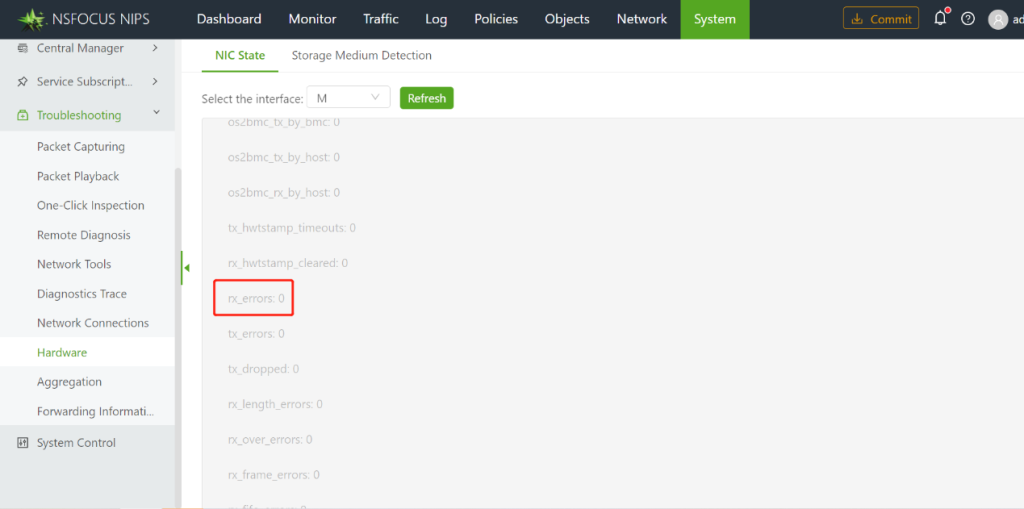When there is MPLS traffic in the network, there may be jumbo frames whose layer 2 packet including the CRC code has a length greater than 1518 bytes. The NIPS network interface card directly discards these jumbo frames by default, causing network failure.
Perform the following check on the client side:
1. Test the client-side network connectivity. Traffic sent from the client and passing through NIPS is encapsulated in MPLS packets. It is found that:
- The ping test and the Telnet test are successful.
- The specific service is unavailable.
2. Choose System > Troubleshooting > Packet Capturing to capture outbound packets of the interface on NIPS. For details, refer to the user manual or online help in the upper-right corner of the NIPS web-based interface. After that, use the packet analysis tool to make an analysis. The following screenshot shows the Wireshark analysis:

“Len=0” is found in the affected service packets.
3. Choose System > Troubleshooting > Hardware to check the outbound interface state. For details, refer to the user manual or the online help in the upper-right corner of the NIPS web-based interface.

(Note: This figure serves as an example only to show the position.)
If the cumulative value of “rx_errors” is large and increases rapidly, it can be determined that there are jumbo frames in the traffic and they are discarded by NIPS by default. If you encounter such a situation, please contact support@nsfocusglobal.com for technical support.
